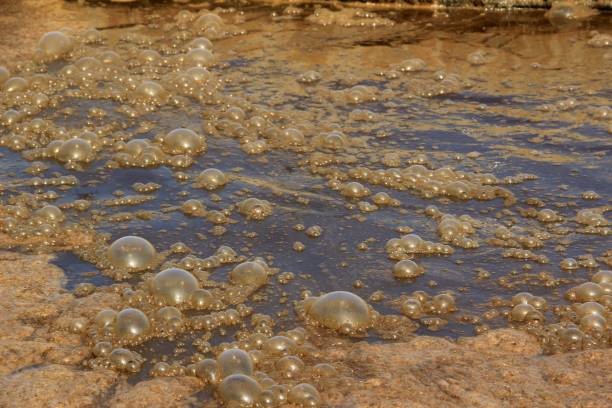Exploring Biological Wastewater Treatment Methods and Understanding Tertiary Treatment! (v2)
How much do you know about biological treatment?
Wastewater treatment technologies can be divided into primary, secondary, and tertiary treatment. Tertiary treatment refers to biological treatment. Biological treatment methods include aerobic, anaerobic, and special biological treatment (as shown in Figure 1). Biological treatment methods are an integral part of modern biotechnology, where naturally occurring microorganisms, through their metabolic physiological functions, transform organic substances in the environment into stable inorganic substances. The biological treatment of wastewater utilizes this physiological function of microorganisms, employing certain techniques to create environments conducive to the survival and proliferation of microorganisms, accelerating microbial growth and metabolic functions, thereby removing organic pollutants from wastewater.
.png)
Below is a brief explanation of the commonly used treatment units for biological treatment methods!
1,Aerobic:
1.Activated Sludge Process: Typically consists of four parts: aeration tank, settling tank, sludge return line, and excess sludge disposal line. Generally, organic wastewater undergoes pretreatment (screening, aeration or vortex sand settling tank, wastewater equalization tank) and primary settling tank/chemical coagulation-precipitation tank treatment before flowing into the activated sludge system's aeration tank for further oxidation/degradation of residual colloidal and soluble organic matter. When wastewater containing such residual organic matter flows into the aeration tank and under conditions of sufficient oxygen supply, nutrient availability, and absence of harmful substances, organic matter is first adsorbed by aerobic microorganisms, then degraded into stable substances (CO2, H2O, NH3), and new microorganisms proliferate. The mixed sludge then flows into the settling tank for solid-liquid separation, with most of the settled sludge being returned to the aeration tank (called return sludge) to maintain an appropriate sludge level. Only a small portion of excess sludge needs to be disposed of (called waste sludge) to maintain an appropriate sludge age. The waste sludge must be treated/final disposed of separately.
2.Biofilm Process: Utilizes microorganisms attached to the surface of certain solids (biofilm) for organic wastewater treatment. The biofilm is an ecosystem composed of highly dense aerobic bacteria, anaerobic bacteria, facultative bacteria, fungi, protozoa, and algae, attached to solid media called filter media or carriers. The biofilm can be divided outward from the filter media into anaerobic layer, aerobic layer, attached water layer, and moving water layer.
2,Anaerobic:
Anaerobic Digestion/Decomposition Method: Under anaerobic conditions, anaerobic and facultative bacteria are used for anaerobic reactions. Organic matter is converted into organic acids, methane, carbon dioxide, and hydrogen. The process can be divided into three stages: hydrolysis, acidogenesis, and methanogenesis.
Whether aerobic or anaerobic, the principle of biological treatment methods is to utilize microbial metabolism to transform harmful substances in wastewater into harmless ones. However, not a single type of microorganism can metabolize the complex organic substances in industrial wastewater, so choosing the right method and the right microorganisms to deal with complex industrial wastewater problems is the most important aspect.

▲Anaerobic ponds typically produce methane and other gases as byproducts.
CONTACT US
Kelly Chemical Corporation
Electronics
TEL:(02)2762-1985 ext 11200
Online Message
Leave your contact information,
and we will get in touch with you soon.
Email Consultation
After receiving your email,
we will process it as soon as possible.send Email